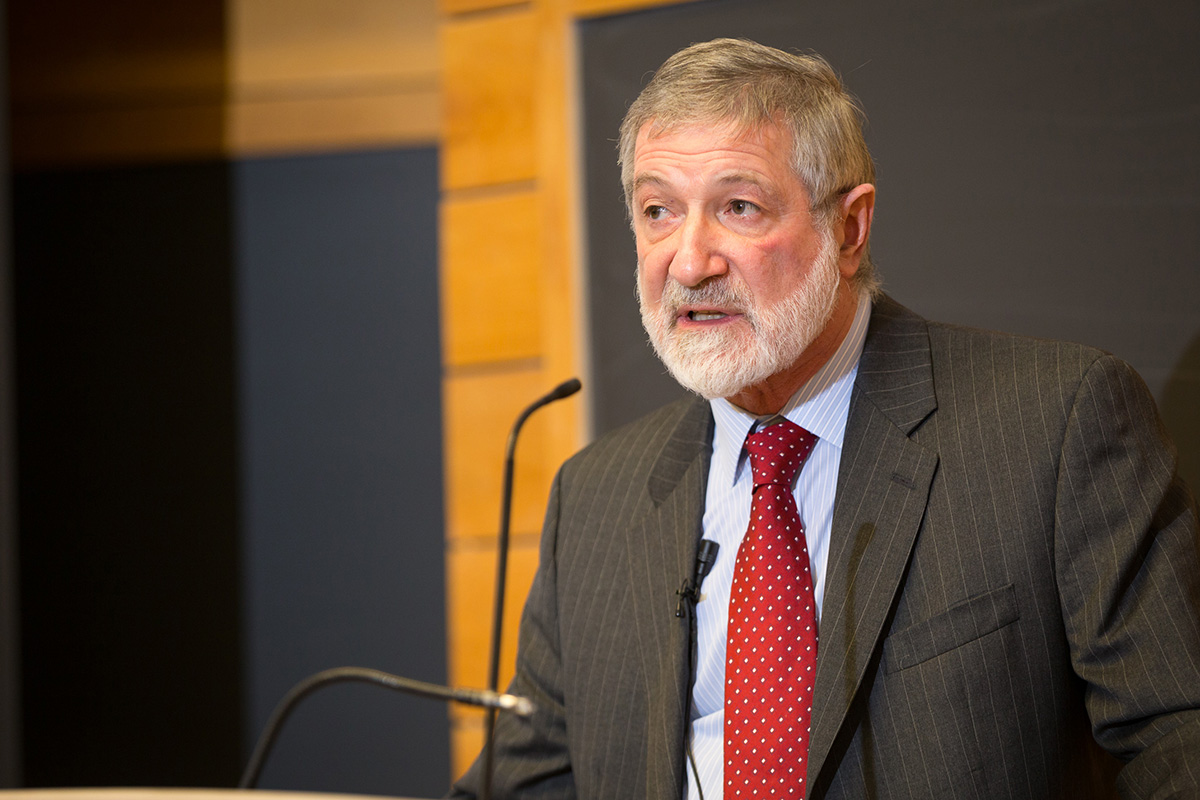Nuclear weapons pose greater threat than climate change

Every moment, our planet is threatened by the possibility of a nuclear deployment or accident. Young people are profoundly uneducated on the global quantity and potential impact of nuclear weapons, and older generations tend to believe that nuclear weapons ceased to be a threat when the Cold War ended. The United States and Russia still have abundant stocks, and both nations engage in rhetoric reflecting a casual attitude to the devastating consequences of even a small, regional nuclear conflict, according to Ira Helfand, M.D. Feb. 8 on campus.
“What we have to understand is that our world, and everything in it we hold precious, is at terrible risk today,” said Helfand, co-founder of Physicians for Social Responsibility and co-president of International Physicians for the Prevention of Nuclear War, which won the Nobel Peace Prize in 1985, during his presentation, “The Growing Danger of Nuclear War and What We Can Do About It.”
Globally, 15,000 nuclear warheads remain. In the United States alone, $2.2 million is spent on nuclear weapons every hour. According to Helfand, a “limited” regional nuclear war between antagonistic nuclear nations India and Pakistan could result in 300 million deaths, with 6.5 million tons of black soot released into the atmosphere. It would be enough to block out the sun and change global temperatures by 1.3 degrees Celcius. For comparison, global temperature only changed seven-tenths of 1 degree from 1880-2010. Precipitation in some parts of the world would fall by 50 percent, and the growing season would not be long enough to sustain staple crops. Two billion people would die of starvation, Helfand said.
While most Americans fear so-called rogue nations deploying nuclear weapons, Helfand most fears American and Russian arsenals.
“We need to start identifying ourselves as rogue states,” he said.
Smaller nations like Israel, Pakistan and North Korea tend to acquire and retain weapons to protect themselves from the United States and Russia, who continuously threaten to use nuclear weapons against weaker states. If Russia deployed only 300 of its 8,000 weapons against America – what Helfand considers a real possibility – it would take 30 minutes to kill 50 million people in the New York metropolitan area, and the climate effects would kill half a billion people.
In 1996, 144 countries, including the United States, signed the Comprehensive Nuclear Test Ban Treaty, which requires eight more signatories to be ratified and become international law. If Congress would agree to it, other nations would follow, Helfand believes. “There is no one in the real political leadership of this country who is taking this issue seriously,” he said.
A new Strategic Arms Reduction Treaty is set to be ratified next year and would result in a significant global nuclear reduction. But even then, if all allowed weapons were detonated at once, planetary temperature would drop eight degrees centigrade. This would freeze the planet and end agricultural production, likely driving humanity to extinction, Helfand said.
Helfand argued that climate change is a slow and predictable threat that can be managed, but the nuclear threat is immediate: “The world could end tonight.” He admonished the audience, “If we are serious about providing for the security of our children, we need to get rid of these horrible weapons before they are used.”
The lecture, part of the Mario Einaudi Center for International Studies’ Foreign Policy Distinguished Speaker Series, was co-sponsored by the Judith Reppy Institute for Peace and Conflict Studies, the Center for Transformative Action and the Episcopal Peace Fellowship.
Media Contact
Get Cornell news delivered right to your inbox.
Subscribe